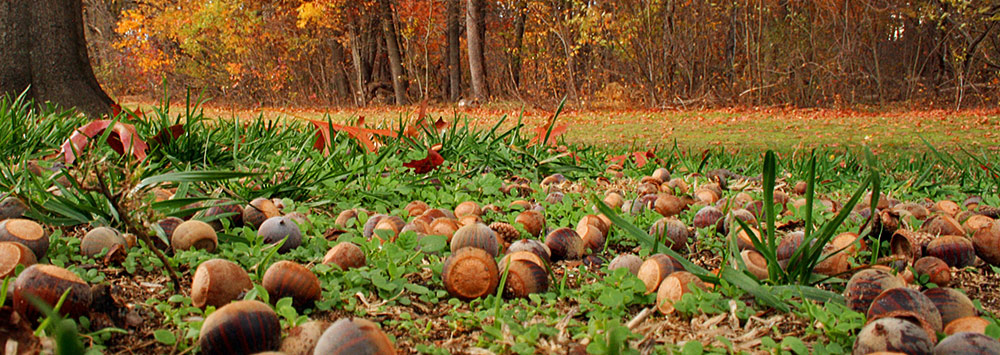Masting
What is masting?
Most plants do not produce regular annual seed crops, but switch between years of bumper seed crops (known as "mast years") and years with low seed production. Intriguingly, these bumper crops occur simultaneously in plants living alongside each other, but the synchronisation can also extend across hundreds of kilometres. This highly variable and synchronised seed production is known as masting. Masting is a characteristic of many forest tree species, including oaks, beeches, pines and spruces, but it is also found grasses and perennial herbaceous plants.
Why is it important?
This highly variable production of seeds is an important process in ecosystems. Masting is beneficial for plants because in years of bumper seed crops, seed predators cannot consume all the available seeds, which ensures that some survive to germinate the next spring. In ecosystems that are influenced by disturbance such as wildfires, windstorms and logging by humans, the timing of the next bumper seed year is also crucial to the ability of plants to regenerate.
However, the importance of masting extends beyond plants. Bumper seed crops in forest trees represent a pulse of food resources, and cause population booms in small mammals (e.g. voles and mice) and seed-eating birds (e.g. woodpeckers and great tits). Low seed crops in the following years results in population crashes. These boom-and-bust cycles of small animal populations have further impacts on ecosystems. For example, tick numbers fluctuate in response to the number of host animals. Ticks act as a host for the Lyme disease pathogen, and research has shown that Lyme infection rates in humans peak two years after bumper seed crops in forest trees, including beech and oak.
Many fruit and nut crops come from "masting" species. In agriculture, this phenomenon is usually known as "alternate cropping". Fruits grown in the UK, including apples and cherries, show this characteristic year-to-year variation in crop size, and many other commercially valuable species including olives, almonds and pistachios also show alternate cropping.
For these reasons, we need to be able to predict seed crops in "masting" species accurately, and understand whether mast years will become more frequent in the future due to climate change. This information is necessary for the management of natural ecosystems and agricultural systems that rely on masting species. Furthermore, predicting bumper seed crops will allow us to forecast years of high risk from infectious diseases carried by animal feeding vectors, such as Lyme. An important question is how seed production in masting species will change in the future with changes in climate. This project is designed as the first crucial step to achieving these objectives.
